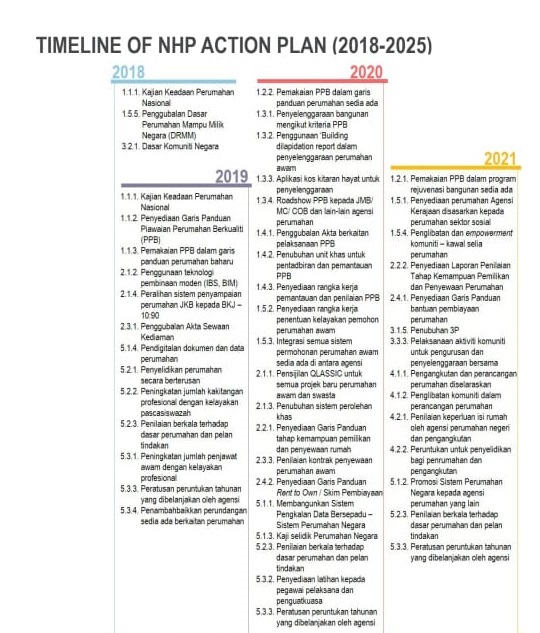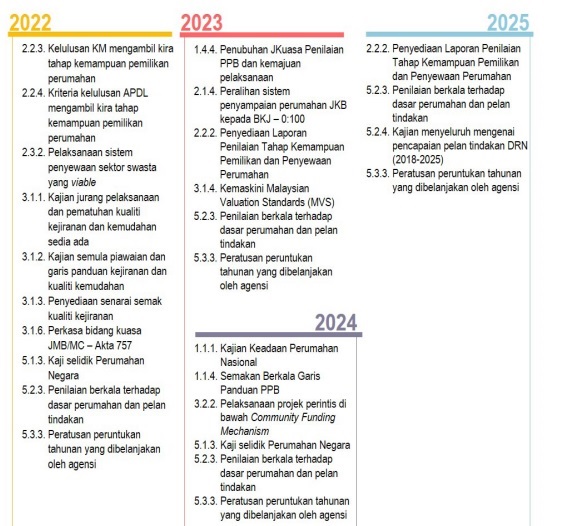
- There are various laws that are applicable to the housing development, but there are still weaknesses in the control, implementation and enforcement of these laws.
- The BTS 10:90 is a far safer mode of home delivery system and the government should, without further delay, compel the housing industry to adopt the system as we believe it will drastically, if not totally, eliminate cases of housing projects being abandoned.
When the National Housing Policy (NHP) (2018-2025) Action Plan was drawn up, it was hoped to improve the housing sector by focusing on the provision of adequate housing, as well as ensuring a safe, healthy and harmonious living environment equipped with complete public amenities and quality recreational facilities.
The NHP is expected to solve the problems pertaining to the quality of construction, the issue of abandoned housing projects, and affordability to own or rent houses via an effective distribution system in the People’s Housing Programme.
In line with the NHP, the Ministry of Housing and Local Government, now renamed Ministry of Local Government Development (KPKT), has been monitoring the implementation of housing developments by the private sector and enforcing the Housing Development Act (Control and Licensing) 1966 (Act 118) and its regulations to ensure housing projects are implemented according to the schedule and completed within the stipulated timeframe.
KPKT has also been taking steps to revive abandoned projects through the Special Task Force for Revival of Abandoned Housing Projects (STF) by solidifying the legal aspects and ensuring more effective enforcement, as well as establishing the direction and policy of the housing industry.
In order to address the current housing needs, both the government and the private sector must play their respective roles to fulfil their social obligations especially to the low-income and middle-income groups.
Issues and challenges
To ensure the housing sector achieves the desired development to positively contribute to the continuous economic growth of the country, various issues and challenges need to be effectively addressed.
Among the issues identified are:
- Quality of the houses built
- Abandoned housing projects
- Affordability and accessibility of the people to own or rent houses
- Demand exceeding supply for low-cost and medium-cost houses
- Construction of Affordable Public Housing (APH) at non-strategic locations
- Distribution of APH
While some of these issues speak for themselves, HBA would like to elaborate on some of them as follows.
Low construction quality
Although most houses built have met the minimum quality requirements set, there are still developments that have fallen short. The use of sub-standard construction materials and lack of skilled workers also contribute to the low quality of houses built.
Although state-of-the-art technology is available, not many developers are ready to invest in it, depending heavily instead on unskilled and cheap foreign manpower, which does not help in raising the quality of houses.
Abandoned and forgotten
Abandoned housing projects in the country continue to shatter the hopes of many from owning their own homes.
Although the majority of developers have fulfilled their delivery promises to house buyers, there are still some bad apples that have reneged on their end of the bargain.
These continued occurrences remain a thorn in the housing industry that pain the affected house buyers and paint a bad picture of KPKT’s control and the errant developers.
Delayed by red tape
Before a housing project commences, it has to go through the application and approval processes at the land office and the local authority (LA). KPKT is responsible for the issuance of housing development licences and advertisement and sale permits after the development order and building plans have been approved by the LA.
However, currently, this process seems to be peppered with glitches, often disrupting the development process and delaying its commencement.
Weak enforcement
There are various laws that are applicable to the housing development. Amongst them are the National Land Code 1965 (NLC), Act 118 and its regulations, Local Government Act 1976 (Act 171), Town and Country Planning Act 1976 (Act 172), Street, Drainage and Building Act 1974 (Act 133) and a host of other state regulations and land laws.
These legal aspects and regulations are vital to be understood and complied with to ensure housing projects are built based on the issued approvals. However, there are still weaknesses in the control, implementation and enforcement of these laws.
Coordination needed
In building APH, there are several agencies and bodies involved such as PR1MA Corporation Malaysia, Syarikat Perumahan Negara Bhd (SPNB), statutory bodies and State Economic Development Corporations (SEDC). Coordination amongst these agencies is needed so that the construction and distribution of these houses can be executed in a more orderly, systematic and just manner in each state.
The implementation of the NHP Action Plan will involve various ministries, departments, agencies at the federal, state and local levels, and the private sector responsible in various aspects of the housing sector as a whole. The main agencies (lead agencies) and implementing agencies for each action and implementation period have also been identified.
In this regard, the NHP did propose that the role and collaboration among agencies and related bodies are further strengthened, but the coordination is yet to be effectively seen.
Build-then-Sell yet to be implemented
One of the five policy statements that was outlined in the NHP 3.3 is reiterated below:
Encouraging the Build-then-Sell (BTS) concept in the housing provision system whereupon a timeline was formulated for year 2019 (transition from Sell-then-Build (STB) to BTS 10:90) and year 2023 (transition from STB to absolute BTS i.e. 0:100).
Under the Housing Development (Control and Licensing) Act and Regulations, the laws have been amended to adopt the BTS 10:90 model since 2012 with the introduction of Schedule I and Schedule J sale and purchase agreements.
HBA has been urging the government to make good the implementation of the BTS 10:90 system as the industry’s housing delivery model from year 2015 as was recorded in the Parliament Hanzard.
Under the BTS 10:90 system, house buyers only need to fork out the initial down payment of 10% when buying a house and do not need to make any further payment until the vacant possession of the property is delivered to them. As such, the servicing of the end-financing loans do not kick in until the houses are completed with all the certifications obtained.
The government’s abandoned project revival efforts do not seem to be able to catch up with the fresh problematic projects that have been labelled as “sick” or “delayed” that continue to add to the statistics of “abandonment”.
The BTS 10:90 is a far safer mode of home delivery system and the government should, without further delay, compel the housing industry to adopt the system as we believe it will drastically, if not totally, eliminate cases of housing projects being abandoned.
This is precisely why the government is encouraging it and offering incentives to developers who adopt this mode of selling their products. However, it has failed to compel the industry to adopt the BTS 10:90 concurrently.
HBA now urges the current government to make BTS 10:90 mandatory for all new housing projects to safeguard the interest of the rakyat and to eliminate the scourge of abandoned housing projects.
Phase-in period to BTS 10:90
Having considered the setback to the industry caused by the Covid-19 pandemic, and to avoid a big disruption to the housing market, HBA would like to propose that the government implement a gradual “phase-in period” for the BTS 10:90:
- By 2023 – mandatory for all affordable housing category
- By 2025 – mandatory for 50% of each housing project by every developer
- By 2027 – mandatory for all housing developments
Revisiting implementation period
The implementation period set out under the NHP Action Plan is as follows:
Estimated time of execution Year
Short-term plan 2018-2020
Middle-term plan 2021-2023
Long-term plan 2024-2025
The diagram below reflects the timeline that was drafted in the NHP, but the blueprint seems to have not been adhered to.
Year 2019:
2.14 - Transition of the housing delivery system from STB to BTS 10:90

Year 2023:
2.14 - Transition of the housing delivery system from STB to BTS 0:100

Is “Malaysia Madani” prepared to take the bull by the horns and lead the country forward vis-à-vis eradicating abandonment of housing projects and saving people’s lives and hardship? After all, “Madani” is the Malay acronym for SCRIPT, which stands for sustainability, care and compassion, respect, innovation, prosperity and trust.
So, lest the government has forgotten the NHP, HBA hopes to document it here for posterity.
Datuk Chang Kim Loong is the Hon Secretary-general of the National House Buyers Association (HBA).
HBA can be contacted at:
Email: [email protected]
Website: www.hba.org.my
Tel: +6012 334 5676





